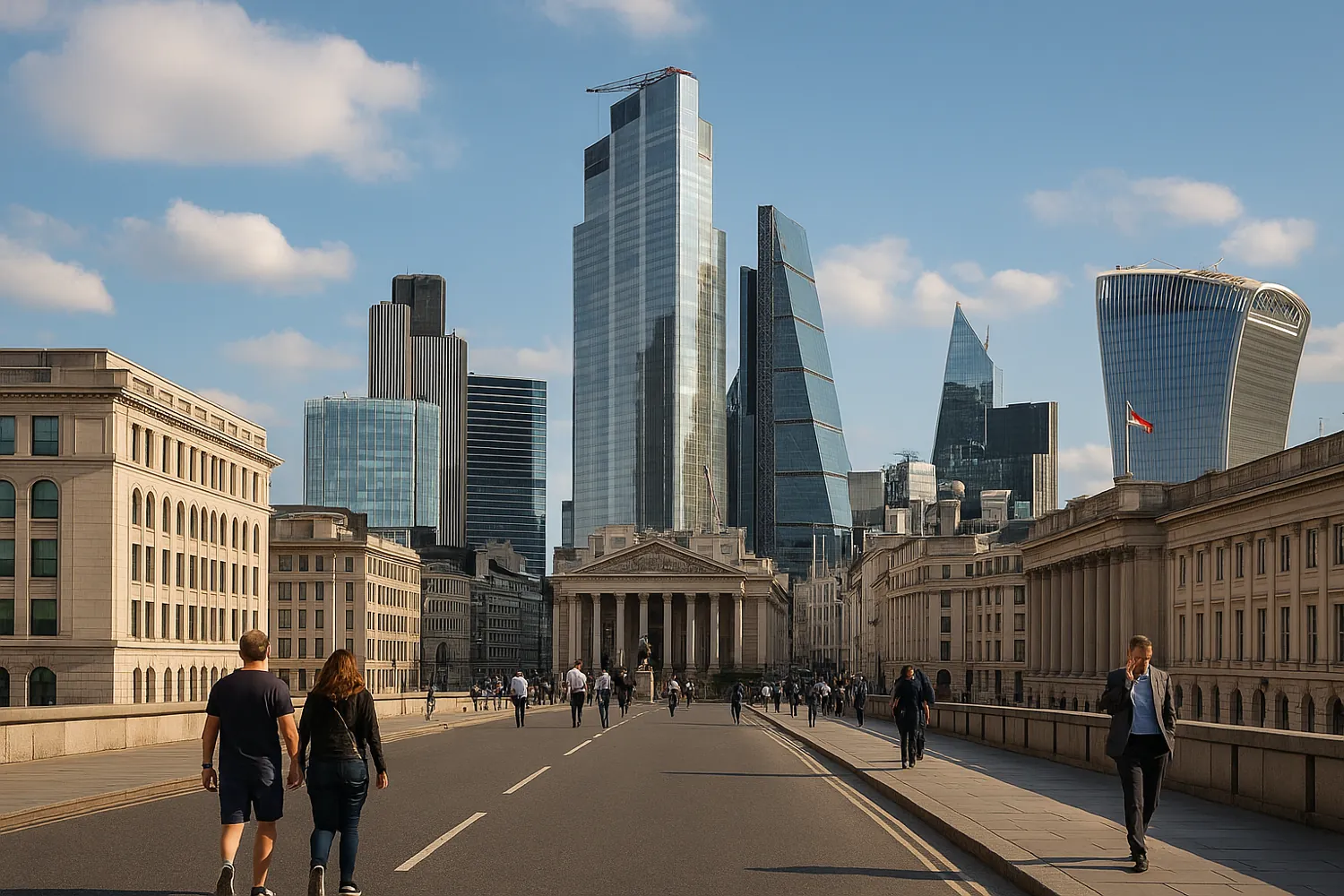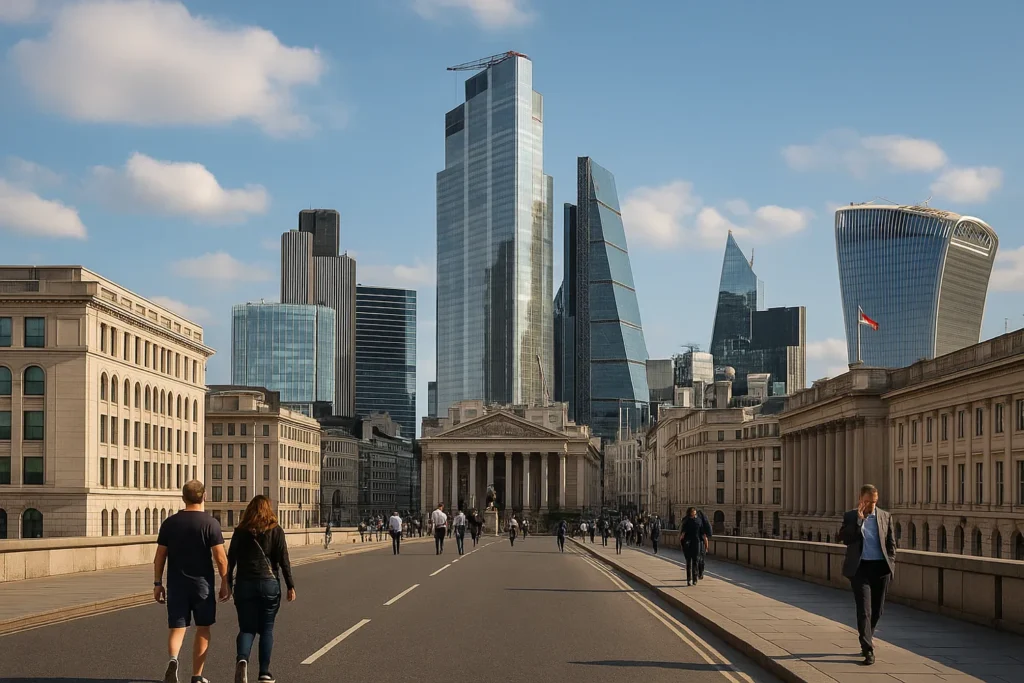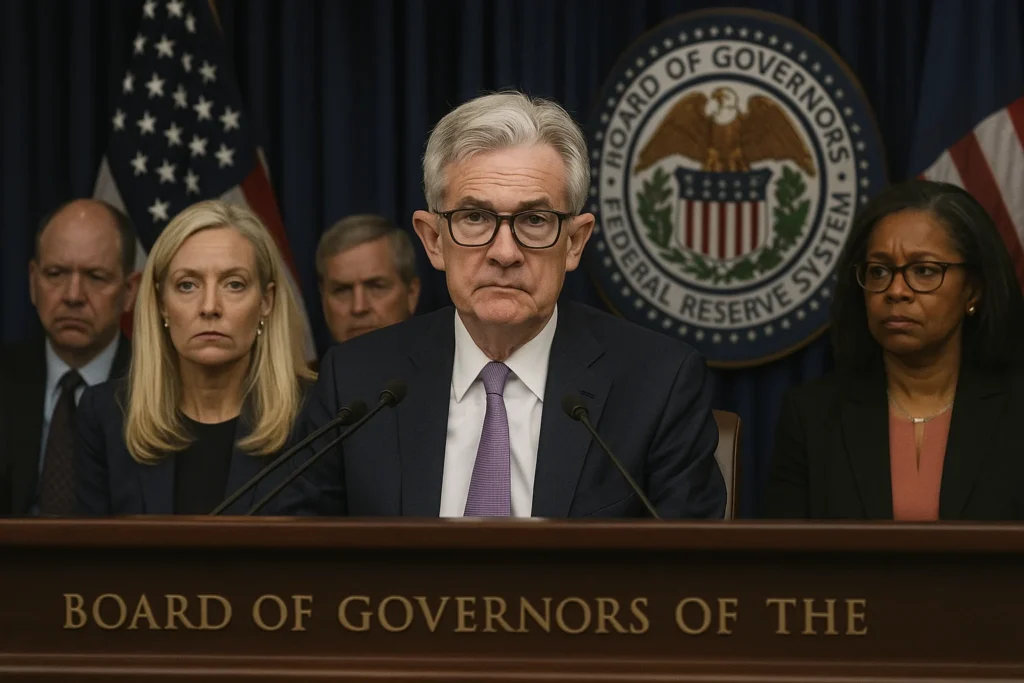The phrase “UK economy improvement” has suddenly reappeared in analyst briefings and investor notes after months of grim data. Signs of life are visible — business activity, orders, and investment sentiment are inching up. But beneath the surface, the same structural flaws that have haunted Britain for years remain unresolved. Is this a genuine recovery, or just another false dawn fueled by selective optimism?
Context: from stagnation to tentative growth
After a year of stagnation marked by recession warnings and crumbling confidence, the latest indicators show a modest turnaround. The composite Purchasing Managers’ Index climbed above the neutral 50 mark for the first time in six months, signaling expansion across manufacturing and services. Retail footfall has improved slightly, and mortgage approvals are stabilizing after a painful rate cycle.
Economists credit this uptick to easing inflation pressures and a resilient labor market. Real wages are finally growing again, albeit marginally. The Bank of England’s decision to pause further rate hikes has restored a sliver of confidence among small and medium-sized enterprises (SMEs). The Treasury calls it “evidence that the UK economy is turning a corner.”
But anyone who remembers Britain’s “false spring” in early 2023 knows better than to celebrate too early.
Oppositional Argument: recovery propaganda and selective storytelling
Talk of “UK economy improvement” masks an uncomfortable truth — much of this recovery narrative is political theater. Government officials are eager to paint a picture of progress ahead of the 2025 election, emphasizing short-term wins while ignoring systemic decay. Productivity growth remains flat. Investment levels are still below pre-pandemic norms. Public debt has ballooned to 98% of GDP, yet infrastructure and public services are visibly deteriorating.
Moreover, while corporate executives cite improved “confidence,” few are expanding their workforces. Instead, they are consolidating, automating, or offshoring to reduce exposure to volatile domestic costs. For ordinary Britons, the supposed rebound feels abstract — real disposable income remains 3% below 2019 levels.
The government’s messaging is clear: Britain is “back on track.” The reality? A country still treading water, struggling to define its post-Brexit economic identity.
Analytical Breakdown: what drives the illusion of improvement
The improvement in business activity is driven by three temporary factors: inventory restocking, easing import costs, and short-term export orders. These don’t reflect structural change but cyclical corrections.
Analysts at Oxford Economics warn that “headline PMI gains are disguising deep sectoral weakness.” Manufacturing output, though stabilizing, remains 7% below its 2018 peak. Construction activity has slowed, and consumer-facing industries rely heavily on seasonal demand.
A closer look at the data reveals regional disparities — London and the Southeast drive most of the rebound, while the North and Midlands lag behind. This unevenness isn’t new, but it underscores the failure of “levelling up” policies that promised balanced development.
The pound’s mild appreciation offers some relief for importers but hurts exporters already struggling with post-Brexit paperwork. Inflation may have cooled, but energy and food prices remain elevated, compressing household budgets.
Even corporate profits, often used as a proxy for resilience, are flattered by cost-cutting rather than expansion. As one insider from the Confederation of British Industry told Oppositioner: “We’re surviving, not thriving. The government wants a success story — we’re just trying not to drown.”
Human Perspective: resilience, fatigue, and disbelief
On the ground, British entrepreneurs display remarkable adaptability. Small manufacturers in Birmingham, tech startups in Manchester, and logistics firms in Kent are all learning to operate with thinner margins and fewer government incentives.
Sarah Donnelly, who runs a mid-sized packaging company in Sheffield, said her optimism is “forced.” “We’ve learned to work around policy, not with it,” she told Oppositioner. “Clients are returning, but credit lines are tight. Every ‘improvement’ feels conditional.”
In the services sector, job openings remain limited, and wage gains lag inflation in many regions. The cost-of-living crisis continues to pressure households. Mortgage borrowers, especially those rolling off fixed-rate deals, still face painful monthly adjustments.
For the average family, the “UK economy improvement” touted by ministers feels distant. The psychological fatigue of economic uncertainty — pandemic, Brexit, inflation — is still palpable.
Counterarguments
Optimists argue that the worst is over — that stability is returning, markets are recalibrating, and innovation hubs like Cambridge and Bristol prove Britain’s competitive edge. They cite modest GDP growth forecasts and strong foreign investment in clean energy and biotech.
But such optimism ignores systemic drag. The UK’s productivity gap versus Germany and the U.S. has widened. Capital spending is subdued, and corporate R&D investment has stagnated. Even in sectors showing progress, such as green tech, inconsistent policy support undermines momentum.
This dual reality — selective improvement and structural stagnation — defines the British economy’s uneasy equilibrium.
Conclusion: Britain’s “recovery” is real, but fragile
Yes, business conditions are improving. But improvement isn’t transformation. The UK economy’s revival depends on sustained productivity reform, infrastructure renewal, and credible industrial strategy — none of which exist today.
The optimism reflected in surveys may lift markets briefly, but it cannot rebuild trust eroded by years of policy drift. Britain’s business community has learned to survive without believing in government promises.
Until the country confronts its deeper structural flaws, every “UK economy improvement” headline will remain a mirage — comforting, but temporary.
External Links
34 views






